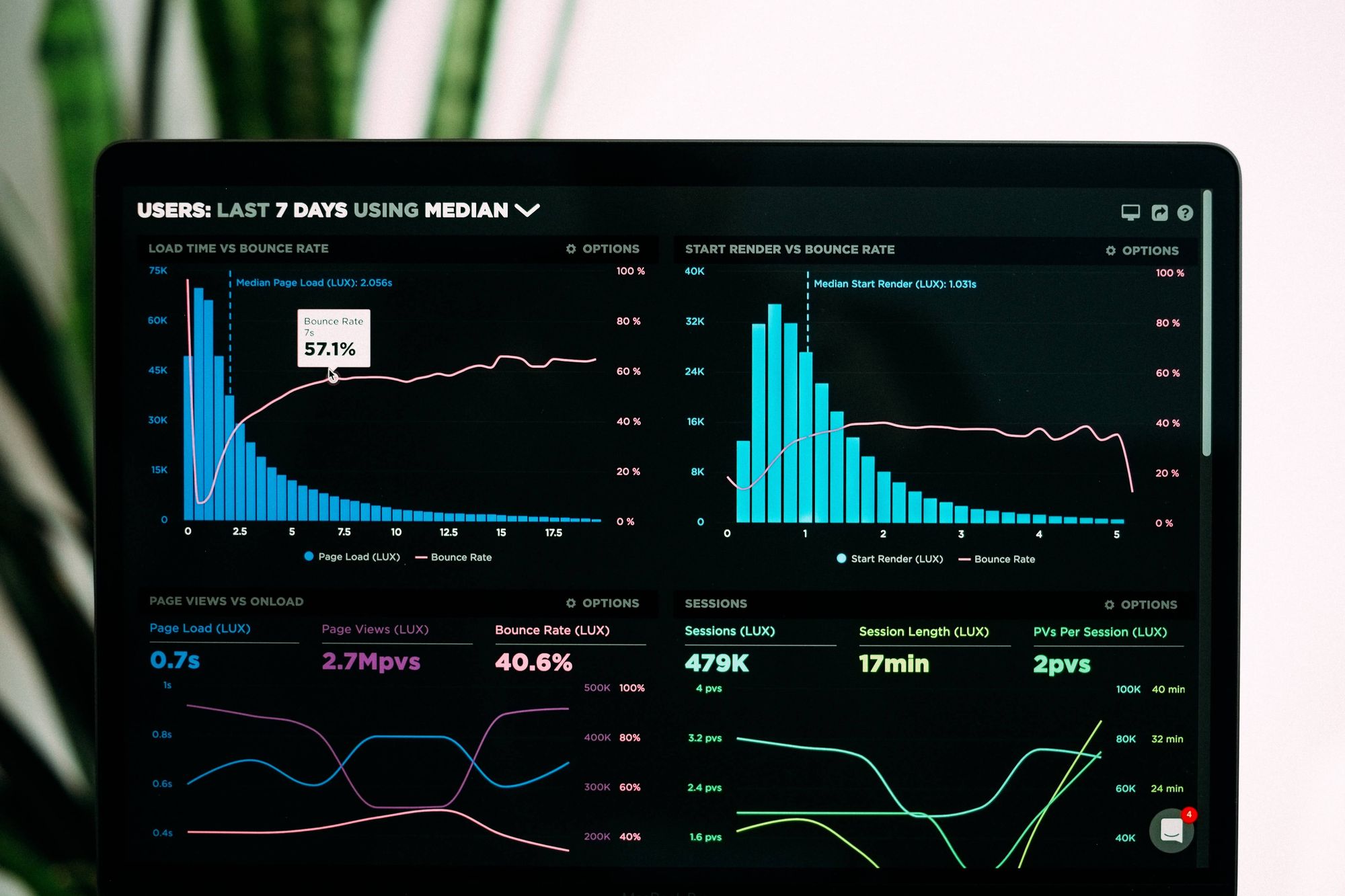We’ve looked into how you can market your SaaS product, create a great go-to-market SaaS strategy, and track the success of your SaaS marketing with the right metrics – now, we’re diving into how you can price your SaaS product.
SaaS pricing models
Ensuring your SaaS product has the right price is important. In comparison to more traditional pricing models used in other industries, SaaS pricing offers several options, so make sure you’re choosing the right one for your product and business.
Here are a few types of SaaS pricing models:
1. Subscription-based pricing
SaaS products are typically priced on a subscription basis, with users paying a recurring fee to access the product instead of paying a one-time fee. You can charge customers monthly, annually, or at other cadences, as you have a lot of flexibility.
Pros
- You get a predictable and regular revenue stream.
- Recurring fees encourage companies and customers to carry on using the product.
- It helps you scale the business by adding more customers instead of relying on more on-time sales.
Cons
- Customers may cancel subscriptions at any time, which means revenue loss and decreased customer retention.
- It may cost more to acquire customers, since you may have to invest more in marketing and sales.
- Customers may feel locked into a long-term commitment, especially if they’re not fully utilizing the product or aren’t entirely happy with the service.
Example of SaaS subscription-based pricing
Viyard, which lets you personalize videos, get automatic transcripts, A/B test thumbnails, optimize videos, check out who’s watching your videos (and for how long), share them with stakeholders, and more. The Pro version of Vidyard costs $29/mo or $19/mo if billed annually at $228.
2. SaaS usage-based pricing
Another popular model is the SaaS usage-based pricing strategy, which means charging customers based on the amount of resources they consume, such as the data or users they go through. This is different from other pricing models that may charge a fixed fee no matter the usage.
You see this model a lot in cloud-based services, where customers can easily scale their usage up or down depending on their needs, and only pay for what they actually use.
Pros
- Offers a lot of flexibility and cost-effectiveness for customers, which can lead to higher satisfaction and retention.
- Customers understand well what they’re paying for, since the price is directly linked to their usage.
- It encourages efficiency and productivity; since people are paying for usage, they may be more motivated to make the most of the product and reduce unnecessary usage.
Cons
- Usage-based pricing can be difficult to set up and manage when compared to other models.
- It can be tough to predict costs in advance, so customers may find it hard to budget, which can lead to them choosing a competitor’s product instead.
- Customers may also be hit with unexpected bills if they accidently use more than they wanted, which can lead to dissatisfaction as well.
Example of SaaS usage based pricing
Twilio, a customer engagement platform that uses real-time data to offer personalized comms, has two different models: monthly recurring charges and pay-as-you-go usage charges, so customers can choose what they need. They also offer volume discounts and committed-use discounts.
3. Freemium pricing
This popular strategy is all about offering a free version of a SaaS product with limited features and providing more premium features at a cost. This allows people to try out the product and experiment as much as they want before committing to a paid subscription, for instance.
You normally see this type of pricing as a gateway to paid features, capacity, or users – customers get the basics and they’re encouraged to upgrade to a paid system that offers them new things or more of what they had.
The goal is to ensure customers get a taste of the product’s full capabilities in order to attract new users and drive revenue growth. This is a careful balancing act, since you need to provide enough value for people to be happy with the freemium version yet still want to upgrade.
Pros
- Offering a free version of a SaaS product can lower the barrier to entry for potential customers, so they might be more willing to try it without committing to a paid plan.
- By having a freemium model, you can also increase brand awareness and attract a wide audience.
- The free version of your SaaS product is ideal to upsell customers, since you can more easily encourage them to upgrade to a paid subscription.
Cons
- It can be expensive to have a free version of your product because you still need to allocate resources to develop, maintain, and support it.
- The customers who want a free product aren’t necessarily likely to upgrade to a paid plan, so you may have low conversion rates and revenue.
- If your free version is too basic, customers may not want to upgrade to a paid one.
Example of SaaS freemium pricing
Google Drive is a great example of a freemium model. You get 15GB for free but you can pay to have more storage space.
4. SaaS tiered pricing
In this model, customers get different price points, depending on the features and capabilities of each tier, which allows them to choose the level of service that best suits their needs and budget.
You can provide devs with several options while continuously incentivizing them to upgrade to higher tiers for more advanced features and functionalities.
Pros
- You can increase your revenue potential by offering people a range of pricing options and making the most of upselling opportunities.
- You can more easily differentiate your product from your competitors’, since you have several tiers with different choices (ensuring customers get as much customization as possible).
- A tiered pricing model can encourage customers to upgrade to higher tiers as their needs and usage grows.
Cons
- Customers may become overwhelmed by all the choices and features, which can lead to confusion or hesitation when choosing the right pricing option for them.
- Tiered models may limit your growth potential because they create a ceiling on revenue based on the number of tiers you offer.
- Developing and implementing a tiered pricing model can be time-consuming and require additional resources to help you manage it.
Example of a SaaS tiered pricing model
Slack is designed to simplify conversations with internals and externals. Convos happen in channels or private messages, and the product also integrates with other tools, allows you to drag-and-drop files, offers audio chats or face-to-face calls, the ability to share your screen, etc.
The company offers a tiered pricing model that appeals to different types of customers, allowing orgs of all sizes to pick a plan that best fits their requirements and budget.
5. Competitive-based pricing
You can also use competitor-based pricing. This strategy is all about pricing your SaaS product by taking your competitors into account. It means researching prices that are either lower or higher based on product features, quality, and value. The goal is to remain competitive in the market while also ensuring profits!
Competitive-based pricing is typically used when competitors have a similar product, since the SaaS market is huge and highly competitive (it’s estimated to reach 195 billion USD in 2023), as well as constantly changing, which might make it challenging to set a fixed price.
There are three different approaches to this model:
- Lower price: pricing your product lower than your competitors’ product.
- Higher price: by charging a higher price, you can also have better margins than your competition, but customers also have higher expectations.
- Price match: matching your competitors’ prices works better when you have several products to offer, especially because you may have more development costs than your competitors.
Pros
- Easier to adjust prices to stay competitive and attract customers.
- Lower prices can attract price-sensitive customers and higher prices can signal a premium (i.e., high-quality) product.
- Because you need to conduct in-depth market research when you choose this model, you get invaluable insights into trends and developer preferences.
Cons
- Doesn’t consider factors like market demand and development costs.
- You have minimal control over pricing as it depends on your competitors’.
- If you choose a lower pricing strategy, you must be mindful of your margins at all times (and consider ways to move customers to more expensive options).
Example of SaaS competitive-based pricing
It’s fair to say that Apple might use a competitive-based approach to pricing, since they’ve had to compete with Microsoft for a long time – in fact, their competition started in the late 1970s, and Apple ended up taking an approach focused on innovation and consumer-centric tech.
Apple charges more than its competitors but every marketing and sales choice aims to justify that decision.
The company has begun to push their SaaS platforms a lot more by focusing on products like macOS, tvOS, and iPadOS – and, of course, iCloud!
6. Per-user pricing
This model charges customers based on the number of users that have access to the product, and it’s useful for teams or orgs with varying numbers of users.
If you choose this model, you can charge customers a flat rate for each user account created on the SaaS platform – for example, if you charge $10/mo per user and a company or team needs 10 user accounts, the total cost would be $100/mo.
This strategy is typically used for products like CRM (customer relationship management) software, collaboration tools, project management software, etc.
Pros
- This strategy allows businesses to pay only for the number of users who need access to the software, which can be more cost-effective for smaller teams or orgs with a limited budget.
- As a business grows and adds more users to the SaaS platform, they can simply increase their subscription to accommodate the additional users. This makes this pricing structure scalable.
- Per-user pricing is often transparent, making it easy for businesses to understand their costs and budget accordingly, which can help ensure satisfaction and retention.
Cons
- Per-user pricing can be expensive for larger teams, so this model may not be their first choice.
- This structure can also become complex and difficult to manage as the number of users increases.
- With this model, businesses need to manage and pay for each individual user account, which can become a time-consuming process, especially as the number of users grows.
Example of SaaS per-user pricing
Canva offers easy-to-use features that allows customers to create their own graphics. The company charges customers on a per-user basis for using the product.
7. Value-based pricing
Using a SaaS value-based pricing model means charging customers based on the value that they derive from using your product. It means understanding your audience, including their unique needs, pain points, and motivations.
So, customers who can generate more revenue or achieve greater efficiency using your product will be charged more than those who don’t. For example, you can have several pricing tiers, each with different features, and customers can choose what gives them the most value (what will address their needs).
Pros
- This model can help you attract and retain customers; i.e., reduce churn. This is because you’re more likely to attract loyal customers when you’re offering them the biggest value.
- If you’re offering customers the best value, they’ll be happy to tell their peers and colleagues about your product.
- By tying pricing to usage and value, this model incentivizes customers to fully utilize the product to achieve the best results possible.
Cons
- Customers may find value-based pricing opaque or confusing, which can lead to dissatisfaction or lack of trust.
- Value-based pricing can be more complex to implement than other models, since it requires a deeper understanding of customer needs.
- It can be more difficult to forecast revenue, since this will depend on the value that each customer is able to get from the product.
Example of SaaS value-based pricing
Trello is a great example of this type of pricing strategy. They offer several options, including a freemium one, and provide a selection of features and integrations. Customers can choose the option that gives them the best value for money.
Benefits of getting your SaaS pricing right
There are many reasons why you need to set the right price for your SaaS product, including:
- A boost in revenue: if you choose the correct price, you can generate more money for your business, since the right strategy can encourage more customers to sign up for your SaaS product.
- Improved customer acquisition: you can also attract more customers and see a boost in retention if you provide transparent pricing and offer plans that meet the needs of different customers – you can also increase loyalty and reduce churn.
- A competitive edge: gaining competitive advantage in a crowded market is a side effect of offering a better value proposition than your competitors, as it helps you attract a wider audience and win market share.
- More flexibility: with the right pricing model, you can adapt to an ever-changing market and help meet developer pain points and needs. By having the ability to test different strategies and adjust your pricing plans based on feedback, for example, you can stay ahead of the competition and carry on growing your business.
- Increased profits: once you optimize your pricing strategy, you can improve your profit margins and increase your bottom line. And, when you reduce costs and boost efficiency, you’re able to maximize the revenue generated from each customer.
- Better reputation: a fair, transparent, and easy-to-understand pricing plan can improve brand perception and customer trust, which, in turn, leads to an increase in referrals and positive word-of-mouth marketing.
- Improved customer insights: you can gain valuable insights into the needs and preferences of your customers, which helps you fine-tune your pricing strategy and products.

How to price your SaaS product
Besides choosing the right pricing model for your SaaS product, you should also consider other factors, including the following steps, to help determine your SaaS pricing:
Understand your developer audience
Identify your developer personas and understand their needs, preferences, and willingness to pay. You can do this through market research, surveys, customer feedback, etc.
Involve everyone in the decision
Pricing should be a decision made by all departments involved in the development, production, marketing, and sales of a SaaS product. They can help you position your product, as well as target your developer audience in the most efficient way.
Consider LTV/CAC ratio
Customer Lifetime Value (LTV) is the total revenue a customer generates for as long as they’re your client. This metric has an impact on how much you spend to acquire new customers and on your sales tactics, so it’s important you consider it when choosing the right price for your SaaS product.
CAC refers to Customer Acquisition Cost, which, as it says on the tin, measures the cost of acquiring new customers.
The LTV/CAC ratio is important because it measures the expected lifetime value of a customer with the cost of acquiring them – i.e., will you get enough value from a new customer, taking into account the cost of marketing and sales as well?
Applying this ratio can help you develop a pricing strategy that’s aligned with your org’s long-term profitability and sustainability.
Evaluate your costs
Determine the cost of producing and delivering your SaaS product, including development, hosting, maintenance, and customer support. This will help you understand the minimum price you need to charge to cover your expenses and make a profit.
Analyze your competitors
Research your competitors and understand their pricing strategies, so you can figure out how your product compares to theirs and where you fit in the market. We’ve written an article on product market fit if you’d like to learn more about it!
Determine your value proposition
Understand the unique value your product offers to your customers and how it solves their pain points. This will help you position your product in the market and justify your price.

Test different pricing models
Consider testing different pricing models, such as freemium, subscription-based, or tiered pricing. This will help you understand what pricing model works best for your product and your target audience.
Consider discounts
You can provide annual discounts, for example, but make sure to analyze all costs and profits so you’re not actually leaving money on the table.
Include upselling opportunities
Setting a price is not a ‘one and done’ thing. You should also consider future upselling opportunities, since one of the benefits of SaaS is that you can offer upgrades, new versions of the product, etc., all of which increases its value – and drums up more money for your org.
Offer free trials
Many SaaS companies offer free trials to customers because this is a great way to attract people and convert them into paying customers. You can choose the option that works best for you, as long as devs have enough time to experiment with your product – 15 or 30-day trials are common.
Monitor and adjust
Continuously monitor your pricing strategy and make adjustments as necessary based on customer feedback, market changes, and your own business objectives. Remember, pricing is not a one-time decision, and it can be adjusted over time as you learn more about your customers and the market.

SaaS pricing template
Not sure where to start when setting the price for your SaaS product? Let us help! Here’s an example of a simple SaaS pricing template you can use as a starting point for your own pricing model:
Basic plan:
- Price: $X per month/year
- Features: [List of features included in this plan]
- Limitations: [List of limitations or restrictions on this plan, such as number of users, data storage limits, or other usage restrictions]
Standard plan:
- Price: $Y per month/year
- Features: [List of additional features included in this plan, compared to the Basic Plan]
- Limitations: [List of limitations or restrictions on this plan, such as number of users, data storage limits, or other usage restrictions]
Premium plan:
- Price: $Z per month/year
- Features: [List of additional features included in this plan, compared to the Standard Plan]
- Limitations: [List of limitations or restrictions on this plan, such as number of users, data storage limits, or other usage restrictions]
Enterprise plan:
- Price: Custom pricing
- Features: [List of features included in this plan, which may be customized or negotiated with the customer]
- Limitations: [List of limitations or restrictions on this plan, if any]
Additional pricing options:
- Add-ons: [List of additional features or services that can be added on to any plan for an additional fee]
- Usage-based pricing: [Description of any usage-based pricing options, if applicable]
- Discounts: [List of any available discounts, such as annual billing or volume discounts]
Your pricing model may vary depending on the specifics of your SaaS product and business model. It's important to carefully consider your pricing strategy based on factors such as your target market, competition, value proposition, and cost structure.
Mistakes to avoid when pricing your SaaS product
When pricing your SaaS product, there are several common mistakes that you should avoid to ensure that you are maximizing revenue and profitability.
For instance:
Underpricing
Don’t set your prices too low, as that means you’re undervaluing it; this can signal to developers that your product is of low quality or not worth the money, time, and effort it takes to use it. On top of this, a cheaper product may limit your revenue potential as well.
Overpricing
On the other hand, if you set a price that’s a lot higher than your competitors’, you risk making it uncompetitive, limit customer acquisition, and increase churn rate.
Ignoring market research
One of the biggest mistakes you can make is not taking market research into account, since this can lead to a pricing strategy that doesn’t meet market standards or customer needs.
Not incorporating feedback
Customer feedback is critical and ignoring it can have serious consequences, including customer dissatisfaction and loss of revenue.

Complicating pricing
If you offer too many tiers or pricing options, your customers may be confused and find it difficult to choose the right plan, leading to decision paralysis (i.e., indecision in the face of multiple options that can be hard to compare).
Not communicating pricing changes
If you make a change to your current pricing model, you need to make customers aware. Otherwise, if they’re surprised with a sudden hike in price, for example, they might be frustrated and stop trusting you, which can lead to increased churn rates.
Lack of transparency
Being unclear about pricing plans, hidden fees, and payment terms leads to mistrust and negative reviews, so be transparent every step of the way, which goes hand-in-hand with communicating clearly with your customers.
Ignoring lifetime value
Don’t focus only on short-term revenue, but remember that each customer comes with a lifetime value – consider that to make pricing decisions that are aligned with your long-term goals.
Not considering competitors
Another huge mistake. Analyzing the competitive landscape is crucial, so perform research and consider the different prices out there to avoid under or overpricing your SaaS product.
Not revisiting your strategy
If you set a price and never look at it again, you may be missing out on revenue opportunities. Assess your pricing on a regular basis and adjust it accordingly to remain competitive.
SaaS pricing metrics
How do you ensure your pricing strategy is working? By tracking and analyzing the right pricing metrics. Here are just a few you can take into account:
- LTV/CAC: we’ve talked about this metric above but, in short, this ratio is critical to reach a profitable model, since it shows you whether you’re losing money with every new customer you acquire.
- MRR: Monthly Recurring Revenue refers to the revenue your company generates each month from your customers’ subscriptions – so, by tracking MRR, you can determine if your pricing strategy is generating consistent revenue over time.
- ARPU: Average Revenue per User is the average amount of money each customer generates, so it’s important you track this metric in order to figure out whether you need to tweak your strategy.
- Churn rate: the rate at which your customers cancel their subscriptions. If you have a high churn rate, you need to determine whether you’re providing enough value to devs.
- NPS: Net Promoter Score measures customer satisfaction and loyalty and, by tracking it, you can see if developers are likely to recommend your product to others. If not, the reason might be the perceived value for money, so ensure you’re setting the right price and offering value at all times.
In short
Pricing your SaaS product is a complex process with a lot of moving parts, but it’s crucial to take all elements into consideration to ensure you’re providing developers with the features and functionalities they actually need.
There are many different SaaS pricing models, so pick the one that works best for you and resonates with your audience the most – however, if you find your strategy isn’t working, feel free to tweak and adjust as needed!





